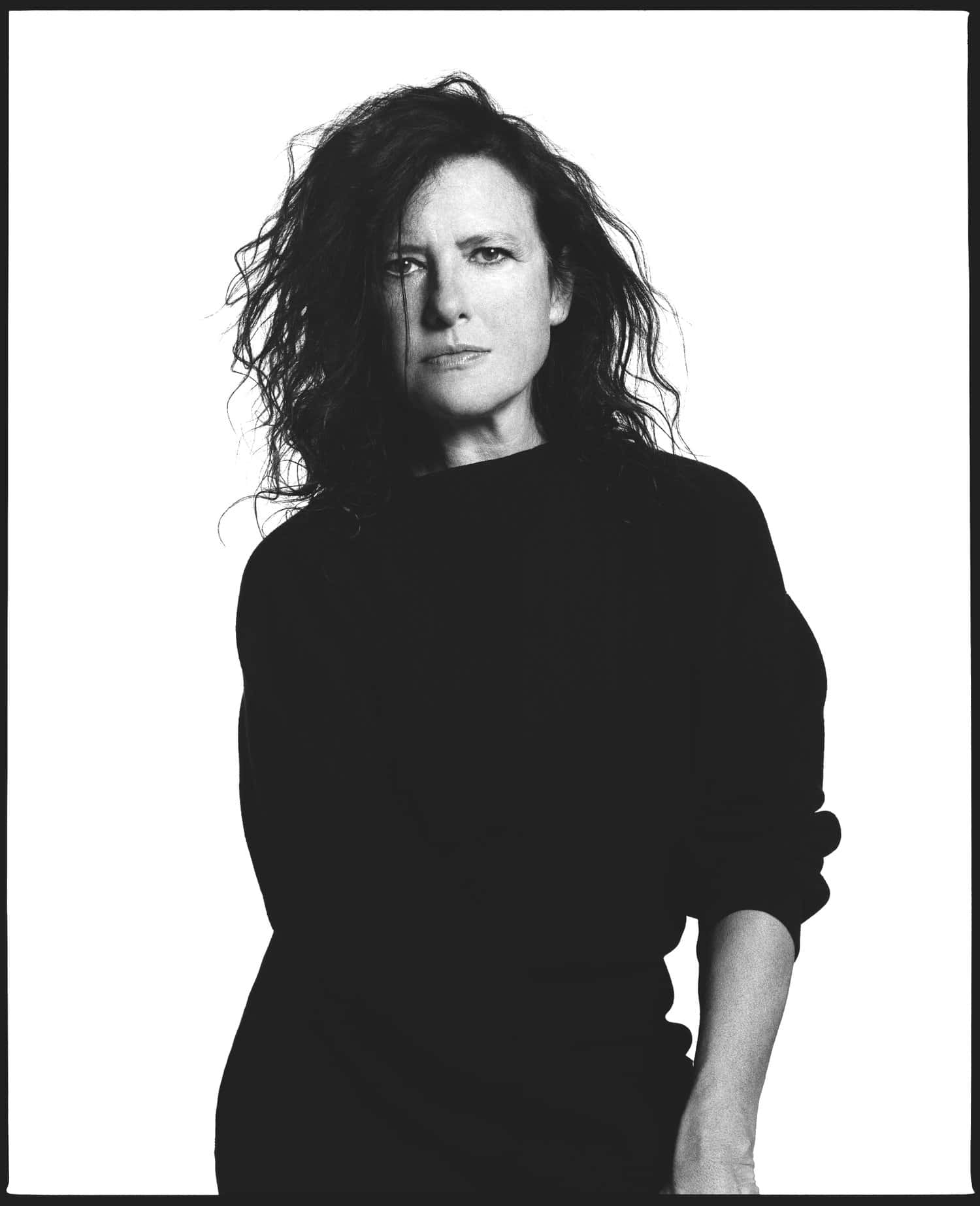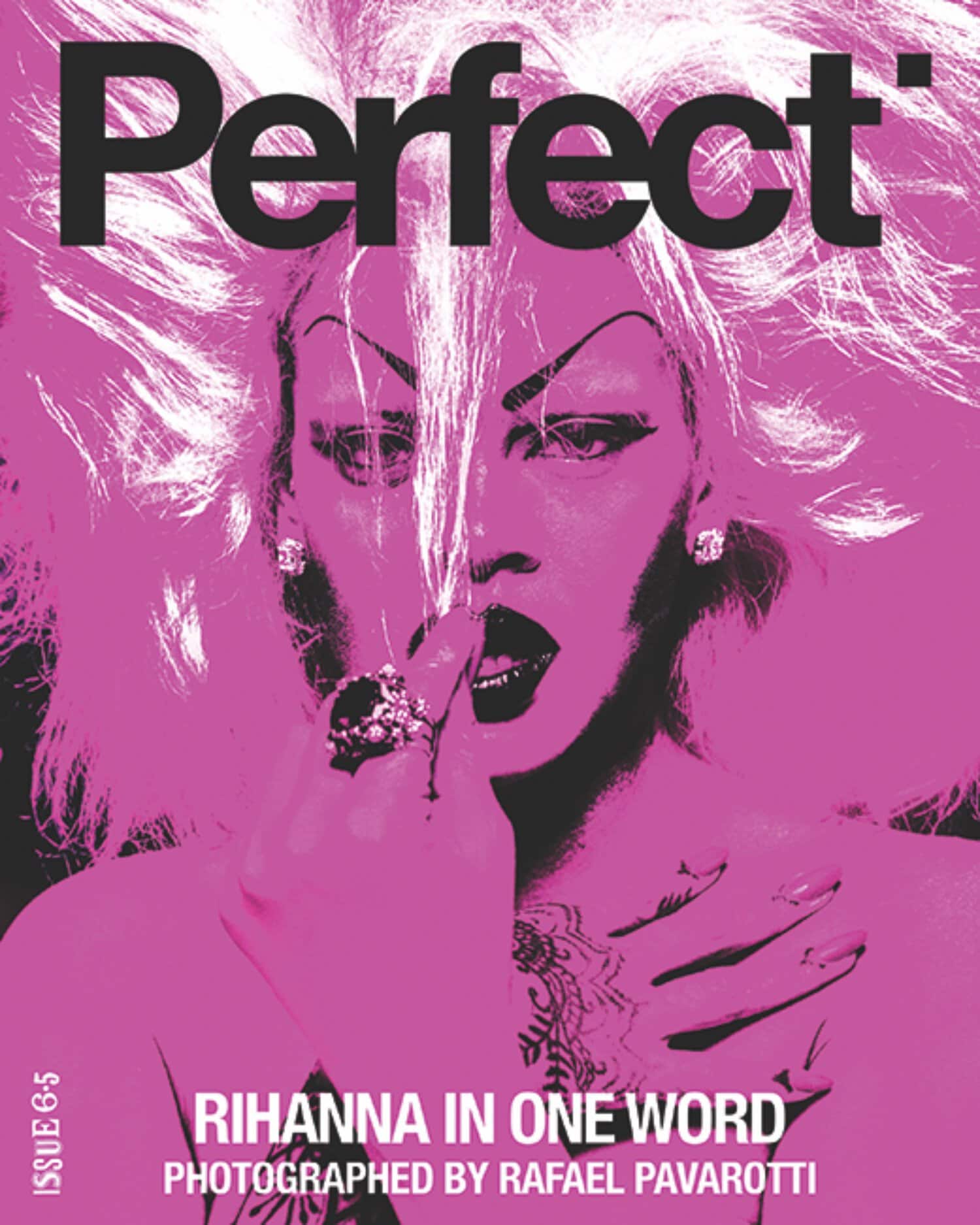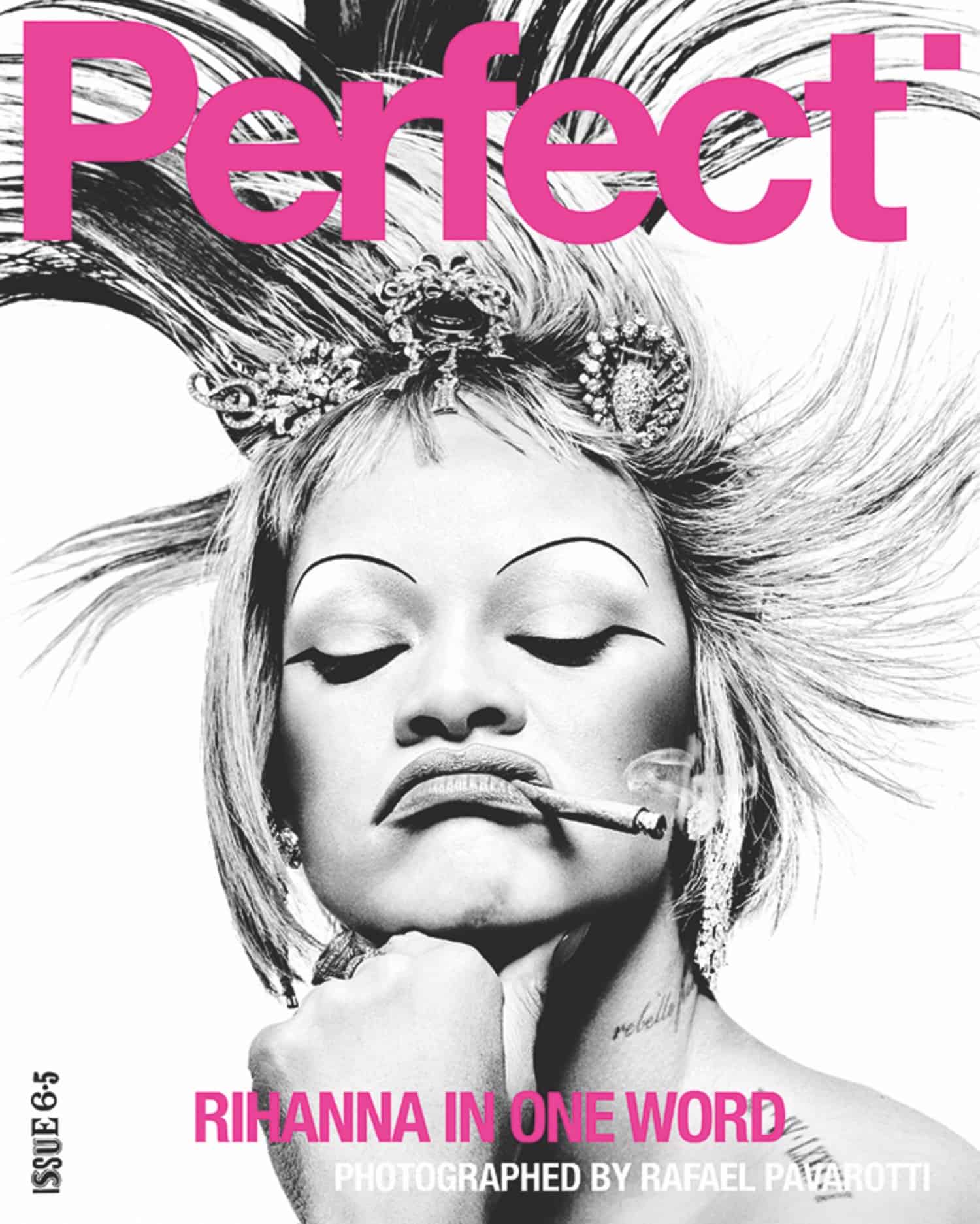Making capital-F fashion glossies with a rebellious, deeply creative streak, Katie Grand has kept newsstands interesting for decades with her work at LOVE, POP, Dazed, and The Face. But her latest—Perfect Magazine—is her most indie project yet, and a labor of love in the best way possible.
First things first! Why did you part ways with LOVE in 2020?
I’d had the most brilliant time at Condé Nast with LOVE, but the people who launched a magazine for me—Jonathan Newhouse, Nicholas Coleridge, Ronnie Cooke Newhouse—were all at different points then, which had a lot to do with me leaving. Jonathan stepped back from the day-to-day and became chairman; Nicholas resigned; it just felt like time. When I was at POP, I’d always wanted to work at Condé Nast; Ronnie bumped into me in the Dover Street Market changing rooms and said, “We should do something with you.” It had always been such an ambition for me to work there. I came from such a different background, working-class Birmingham, than the normal Condé Nast editor. I was a very different proposition, and they were extremely supportive. I felt validated being there and had a brilliant time doing LOVE for more than 10 years. After Nicholas had left, it wasn’t the same company for me. It took me 20-odd years to get to a place of not being scared of the back end, finances, employing and paying people, and to think, “Oh, I could do this on my own.”

Katie Grand (Courtesy of Katie Grand)
When did Perfect Magazine come about?
It was summer 2020 and obviously, magazines were in a terrible place. No one could shoot anything or knew what was going to happen. It was challenging. Everyone kept saying, “Oh, this is the worst time ever for magazines.” I remembered that when we launched LOVE, I was told it was the worst year ever to launch a magazine—2009—and when we launched POP in 1999, that was the worst time to ever launch a magazine. There was a pattern there! I’d joined Dazed in 1993, which was also called the “worst year ever” to do anything. And 2020 felt like the worst time ever, so I thought, “What’s the worst that could happen?”
What were those peak-COVID early days of Perfect like?
It was a great time to launch something new, because the process had to be so different. People couldn’t travel because of so many logistical restrictions, so I was interested in commissioning completely local teams. It was a completely different way of working from how I’d worked before, which was: I’ll get on a plane, the talent can get on a plane, or we’ll fly to the talent. Out of necessity, I had to look at a different way of working, and look at completely different talent. I’ve been so used to, “Let’s fly in a hairdresser, let’s fly in a makeup artist,” those things that magazines have done for years. Like Zhong Lin, who’d been stuck and not able to travel for the better part of a year, so she’d done this “Project 365,” where she’d taken a photograph every day to keep herself entertained. I phoned her agent saying, “Well, if we can get a dress to her, maybe she could shoot a cover.”
- Rihanna
- Rihanna
How did it feel to do things in a radically new way?
I was excited by working so differently, trusting people—photographers, producers—you got to know over Instagram. There was no choice, so it’s not like I could get nervous about it! I just had to trust that people were going to come through with interesting work, and they did. The summer of 2020, we all sat in my kitchen talking about what we’d like to do, and hadn’t been able to do yet on the various magazines we’d worked on together before. Two members of the Perfect team, I’ve worked with since The Face—so, since 1999—Murray Healy, our editorial director, and Graham Rounthwaite, the art director. We were idealistic and optimistic about doing it differently with this magazine. Bryan Yambo, our international editorial director, has been a massive part of this team, too. I love working with him because he’s from such an untraditional background that he just doesn’t care about publishing status things; we speak 20 times a day.

Rihanna
How was the mag evolved in the four years since?
The first two years, we just had to work in a certain way and if we managed to get dresses to, say, Shanghai, it was so hard logistically that just getting it done was kind of a thrill! As the world’s gone back to normal, with Rihanna on this issue, we all flew in, except Rihanna, so the process has become similar again, but the relationships we started have been important. My go-to photographers have changed a lot, and that’s been exciting, like working with Rafael Pavarotti and seeing him grow. Shooting with him and Rihanna, I don’t think I’ve ever shot through 9:30 in the morning, and none of us were tired, and no one got bored, everyone was excited to be there, it was so fun to be in that room. It was just electric.

Naomi Campbell

Miuccia Prada
How did working with Rihanna come about?
At least four years ago, when I was at LOVE, I had a conversation with Jahleel Weaver, who works on Rihanna’s creative direction about potentially working with her. It was a different time in both of our careers, and Rihanna was at the point she wanted to work with megastar photographers. We talked about doing it with David Sims, Mert [Alas] and Marcus [Piggott], the kind of big photographers we worked with at LOVE, but didn’t land on an idea. I think because I’d gone through the process with them before, I was probably less nervous this time. I was thinking, “We’ll get on the call, see how it goes; if something sticks, we’ll try to make it happen.” Jahleel asked me, “What do you want to do that you’ve never done before?” I said I’d always wanted to do one shoot, then do a second shoot immediately after, so it’s more than a one-off. When I get in the room with someone who’s inspiring and wants to be there, I’ve always wanted to follow up, build that relationship, rather than shooting them three years later when they’ve got a new album or film.

Bella Hadid
How did this multipart-shoot concept land with her team?
They loved the idea of committing to working together on something bigger; I think no one had ever said that to them. Jahleel came back with these two ideas: one studio-based and character-driven; the other, a domestic location, daylight, interior shoot. Very different visual propositions. When the first issue came out, we knew we were doing this second issue and it felt fun to be in the middle of quite a big project, rather than just a one-off.
- Rihanna
- Rihanna
What were these two distinct shoots with Rihanna like?
They couldn’t have been more different. The first was at Pier 59 Studios in New York. I got on set at 1:50 a.m. and I left at 9:30 a.m.; I left only because I was on another shoot with a 7:30 a.m. call time. I’m never, ever late, and I was two hours late. We had a DJ, it was like a club—loud relentless music—and the looks Jahleel Weaver and [makeup artist] Yadim came up with were club-inspired, too. I got drunk on red wine because I was nervous. And then, the second shoot, in L.A., with photographer Carlijn Jacobs, was during the daytime; Rihanna arrived early. I was still on the plane when she arrived, so I got an escort off the plane because I said to the very nice people on the plane, “You’re not going to believe this, but I’m on set with Rihanna, and I’m late. Can you help me?” And they were all like, “We will help you get through customs.” That was surreal, but very fun.

Rihanna
How do you manage the realities of making a print glossy, and making it viable financially, nowadays?
The price of paper is exorbitant, so it’s very, very expensive to print a magazine today! If you distribute through newsagents, they take a cut of 50 to 60 percent and it’s almost impossible to make it work financially. Within six months, I learned I couldn’t afford traditional distribution because we were losing so much money on every single unit. There’s a warehouse involved, you pay for storage on that warehouse, for the van taking magazines to newsagents, and you’re also going to pay shipping to distribute abroad. Our first issue, everyone got so excited about our sales, yet we ended up making no money on the physical print issue because it had all gone to shipping and storage, and newsagents. I sat down with Soraya [Lamari, Perfect’s publisher] and we realized we had to make subscriptions work, because otherwise, it was just a fancy project if we’re losing $40,000 an issue on distribution. It was important to me to sell internationally. If people order online directly, we can send issues pretty much anywhere in the world. So our distribution is much, much wider than anything I’ve worked on before. Yes, the shipping is high, the unit price is high. We have a premium product. The paper is gorgeous. The printing is impeccable. The photography is special. We’ve got a good fan base now that’s buying every issue directly. I don’t think we could have done it any other way, to be absolutely honest.
Is Perfect wilder, weirder, or scrappier than LOVE?
I love the word scrappy. I think we were pretty scrappy at Condé Nast, which is why at the beginning they loved us because we were so much scrappier than everyone else there. Then over the years, they probably got a bit tired of our scrappiness. Working within a big corporation, there’s more people to answer to and explain to. When Nicholas was my boss at LOVE, he appreciated it needed to be a satellite project; as long as we were doing great magazines and making money, he was happy for us to be self-sufficient. Financially, I’ve been successful with the magazines I’ve done; I’ve never lost money, and I think I have an inkling of when to worry and when to not worry. Not having to explain that to someone feels quite good.
So what’s next for you and Perfect?
This year has been the dream and I’m still in the middle of it, so I don’t know how it could be better! I’m sure something great is around the corner, but I’m just riding the wave of these projects with Rihanna and her team. It’s unusual for someone so famous to trust quite crazy creative people. To carry on working with people with good taste, who want to get the best out of people is exciting. Jahleel has come on board as a staff member, which will be fun. He has such a different way of working from what I’m used to; I enjoy being challenged like that.
Subscribe to our newsletter and follow us on Facebook and Instagram to stay up to date on all the latest fashion news and juicy industry gossip.





